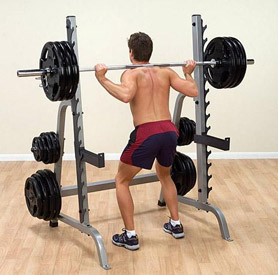 Increased loads must take place in the training plan. Means, that if we start to put them on, this first, for a specific purpose, Secondly – in a clearly planned and clearly defined period of time, and third, taking into account a sufficiently long time for regeneration.
Increased loads must take place in the training plan. Means, that if we start to put them on, this first, for a specific purpose, Secondly – in a clearly planned and clearly defined period of time, and third, taking into account a sufficiently long time for regeneration.
Heavy weights are a stimulus, that has to serve something – stimulating the growth of muscle mass, developing muscle strength, or both. They definitely cannot be used in competitions "who's more", which can still be watched all too often in gyms. The barbell, bordering on the "hundred", in the hands of a 17-year-old is no joke, but a serious challenge for his body.
A lot of weight means a lot of stress on the body. Means, that it must be properly prepared for it, which assumes both planning a specific training program, sufficiently long breaks between sets : exercises, time to recover after each session, and a diet that supports the effort. It is not uncommon to find mistakes in these aspects, which make, that training instead of serving us, starts to hurt. Instead of gains, stagnation begins, overtraining, instead of increasing strength, it is lacking. Unfortunately, treating your body like machines, which does not need longer breaks to function and which can be used freely quite quickly, may end up with a forced break. One of the longer ones…
THE RIGHT WEIGHT
Often, trainees try to practice under programs printed in magazines. The loads are given in relation to the JPM, one maximum repetition. The trouble is, however, to establish its value, especially if you've never done this before. They can be calculated using a special table. This table is universal, which means, that you can use it to calculate JPM for almost any exercise. This table is a simple and very effective tool, allowing to determine JPM quite accurately, with a really small margin of error. Calculations are made by multiplying the load used in the series of a given exercise (in which we perform at least 4 repeat) by the corresponding coefficient. Below is a table with the coefficients for sets of two to ten repetitions. It is enough to multiply the used load by the given coefficient, to get a very rough JPM.
The number of repetitions in the series / factor
2 X 1,07
3 X 1,12
4 X 1,15
5 X 1,18
6 X 1,21
7 X 1,24
8 X 1,27
9 X 1,30